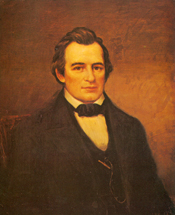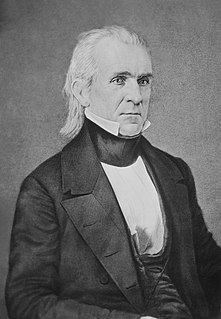Contents
On March 8, 1838, a special election was held in Pennsylvania's 9th congressional district to fill a vacancy left by the resignation of Henry A. P. Muhlenberg (D) on February 9, 1838. [1]
| Elections in Pennsylvania |
|---|
 |
On March 8, 1838, a special election was held in Pennsylvania's 9th congressional district to fill a vacancy left by the resignation of Henry A. P. Muhlenberg (D) on February 9, 1838. [1]
| Candidate | Party | Votes [1] | Percent |
|---|---|---|---|
| George M. Keim | Democratic | 2,599 | 96.8% |
| Scattering | 85 | 3.2% | |
Keim took his seat on March 17, 1838 [2] during the 2nd session of the 25th Congress.

The 25th United States Congress was a meeting of the legislative branch of the United States federal government, consisting of the United States Senate and the United States House of Representatives. It met in Washington, D.C. from March 4, 1837, to March 4, 1839, during the first two years of Martin Van Buren's presidency.

The 26th United States Congress was a meeting of the legislative branch of the United States federal government, consisting of the United States Senate and the United States House of Representatives. It met in Washington, D.C. from March 4, 1839, to March 4, 1841, during the third and fourth years of Martin Van Buren's presidency. The apportionment of seats in the House of Representatives was based on the Fifth Census of the United States in 1830. Both chambers had a Democratic majority.

The Territory of Wisconsin was an organized incorporated territory of the United States that existed from July 3, 1836, until May 29, 1848, when an eastern portion of the territory was admitted to the Union as the State of Wisconsin. Belmont was initially chosen as the capital of the territory. In 1837, the territorial legislature met in Burlington, just north of the Skunk River on the Mississippi, which became part of the Iowa Territory in 1838. In that year, 1838, the territorial capital of Wisconsin was moved to Madison.

The 1838 and 1839 United States House of Representatives elections were held during President Martin Van Buren's term at various dates in different states from July 1838 to November 1839.

The 1836 and 1837 United States House of Representatives eletions were held at various dates in different states from July 1836 to November 1837.

The 1834 and 1835 United States House of Representatives elections werer held during President Andrew Jackson's second term.
Isaac Hopkins Bronson was a United States Representative from New York and a United States District Judge of the United States District Court for the District of Florida and the United States District Court for the Northern District of Florida.

Samuel Jameson Gholson was a United States Representative from Mississippi, a United States District Judge of the United States District Court for the Northern District of Mississippi and the United States District Court for the Southern District of Mississippi and a General in the Confederate States Army.

John McKinley was a United States Senator from the state of Alabama and an associate justice of the Supreme Court of the United States.
Events from the year 1789 in the United States. The Articles of Confederation, the agreement under which the nation's government had been operating since 1781, was superseded by the Constitution in March of this year.
The 1840 and 1841 United States Senate elections were elections which, corresponding with their party's success in the 1840 presidential election, had the Whig Party take control of the United States Senate.
The 1838 and 1839 United States Senate elections were elections which had the Democratic Party lose seven seats in the United States Senate, but still retain a majority.
The 1836 and 1837 United States Senate elections were elections that had the Jacksonian coalition emerge as the Democratic Party, and the Adams, or Anti-Jackson, coalition emerge as the Whig Party

On November 4, 1836, a special election was held in Pennsylvania's 13th congressional district to fill a vacancy left by the October 30th, 1836 resignation of Jesse Miller (J).

On June 29, 1837, a special election was held in Pennsylvania's 3rd congressional district to fill a vacancy left by the death of Francis J. Harper (D) on March 18, 1837.

On November 20, 1839, a special election was held in Pennsylvania's 14th congressional district to fill a vacancy caused by the death of William W. Potter (D) on October 28 of that year, before the start of the first session of the 26th Congress.

On October 13, 1840, the same day as the general elections for the 27th Congress, a special election was held in Pennsylvania's 22nd congressional district to fill a vacancy caused by the resignation of Richard Biddle (AM).

On November 20, 1840, a special election was held in Pennsylvania's 13th congressional district to fill a vacancy caused by the death of William S. Ramsey on October 17 of the same year.
The 1838 United States elections occurred in the middle of Democratic President Martin Van Buren's term, during the Second Party System. Members of the 26th United States Congress were chosen in this election.